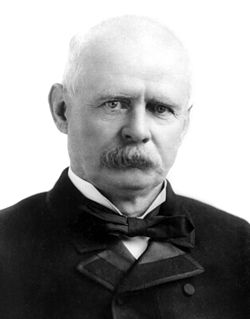| 54th United States Congress | |
|---|---|
53rd ← → 55th | |
 United States Capitol (1906) | |
March 4, 1895 – March 4, 1897 | |
| Members | 90 senators 357 representatives 4 non-voting delegates |
| Senate majority | Republican (plurality) |
| Senate President | Adlai E. Stevenson (D) |
| House majority | Republican |
| House Speaker | Thomas B. Reed (R) |
| Sessions | |
| 1st: December 2, 1895 – June 11, 1896 2nd: December 7, 1896 – March 3, 1897 | |
The 54th United States Congress was a meeting of the legislative branch of the United States federal government, consisting of the United States Senate and the United States House of Representatives. It met in Washington, D.C., from March 4, 1895, to March 4, 1897, during the last two years of Grover Cleveland's second presidency. The apportionment of seats in the House of Representatives was based on the 1890 United States census. The House had a Republican majority, and the Republicans were the largest party in the Senate.
Contents
- Major events
- Major legislation
- States admitted
- Party summary
- Senate
- House of Representatives
- Leadership
- Senate 2
- House of Representatives 2
- Members
- Senate 3
- House of Representatives 3
- Changes in membership
- Senate 4
- House of Representatives 4
- Committees
- Senate 5
- House of Representatives 5
- Joint committees
- Caucuses
- Employees
- Legislative branch agency directors
- Senate 6
- House of Representatives 6
- See also
- References
- External links



